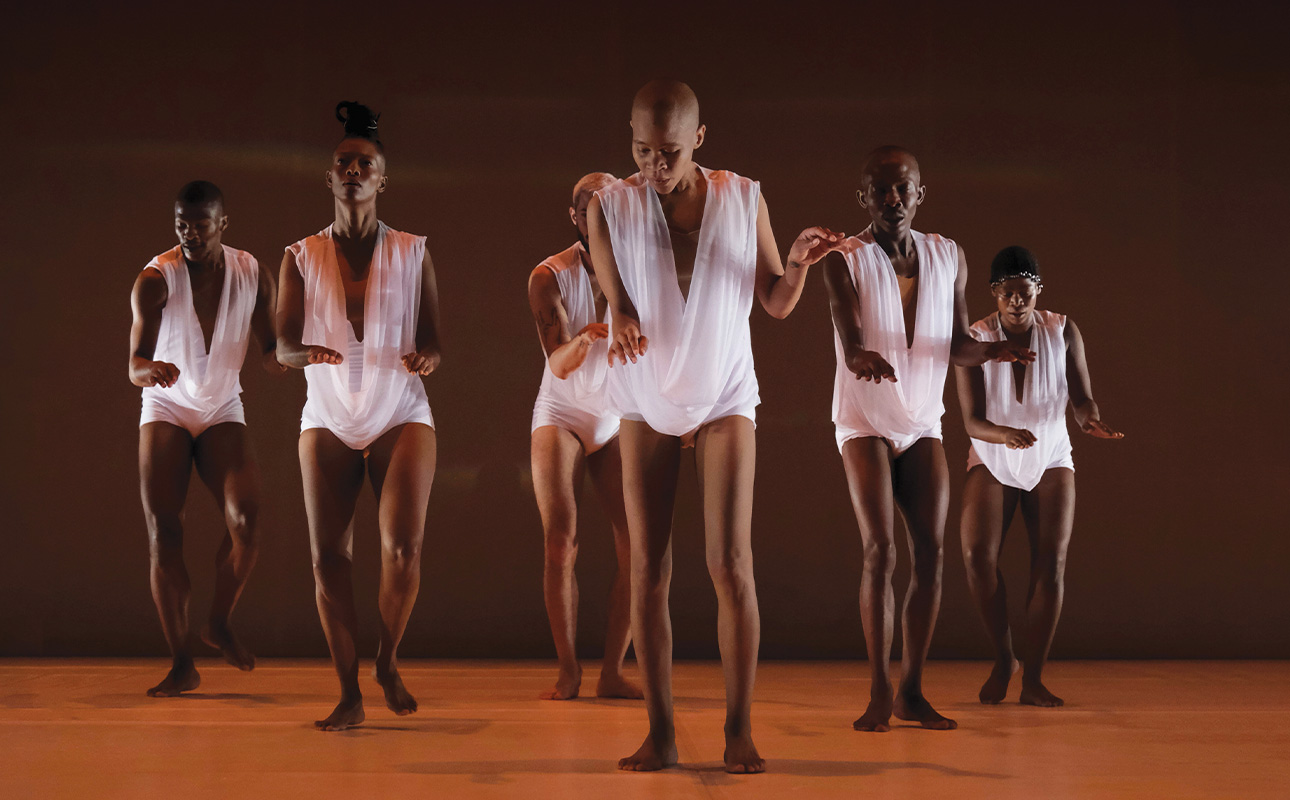On May 29, 1913, Igor Stravinsky’s Le Sacre du printemps, or The Rite of Spring, premiered in Paris, commissioned by Sergei Diaghilev for his Ballets Russes and choreographed by Vaslav Nijinsky. Based on Russian folklore, the avant-garde ballet’s storyline, complex musicality, and ritualistic, modern movement caused quite the commotion in the theater—audience members became increasingly hostile, unruly, rowdy. Though the orchestra and dancers continued through the noise, the rioters were dismissed, and, according to reports in later years, the commotion continued in the streets. Neither the uproar nor the premiere were received well.
Yet for all the ballet’s early detractors, The Rite of Spring remains one of the most influential works of the 20th century. Its score stands out as the world’s first modernist orchestral work—and is instantly recognizable as one of the most recorded works in the classical repertoire. According to dance historian Ismene Brown, more than 190 reconstructions and derivations have been mounted on professional stages worldwide—including South African choreographer Dada Masilo’s The Sacrifice, on view at Spoleto Festival USA this season, June 1 to 4. On June 5, the Festival Orchestra will also perform Stravinsky’s score, under the baton of Resident Conductor and Director of Orchestral Activities John Kennedy.
Ahead of these Spoleto performances, check out this brief timeline of the ballet and its some of its many iterations—including those performed during the Festival.
1913: The OG
Renowned for assembling the world’s most interesting creatives of the day and commissioning large-scale works, the impresario Diaghilev founded the legendary Ballets Russes in 1909 with a goal of introducing Russian artists—like Stravinsky, Leon Bakst, Michel Fokine, and Rimsky-Korsakov—to the Western world. The Rite of Spring was a collaboration between composer Stravinsky, visual artist Nicholas Roerich, and choreographer Nijinsky. The work celebrates the advent of spring, though its subtitle, “Pictures of Pagan Russia,” explains the ballet’s darker plot of ritual sacrifice. The ballet received five performances in Paris and four in London before closing: due to the outbreak of World War I, a falling out between Nijinsky and Diaghilev, and Nijinsky’s declining mental health, the original staging was lost for more than 70 years.
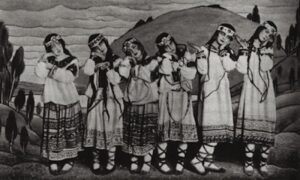
Nijinsky’s The Rite of Spring, 1913
1914: The first orchestra-only Rite
On February 18, 1914, The Rite of Spring received its premiere concert performance in Saint Petersburg, conducted by Serge Koussevitzky.
1920: A staged revival
Russian choreographer Léonide Massine choreographed the ballet’s first revival in 1920; this production debuted in the United States in April 1930 and was performed by the Philadelphia Orchestra with Martha Graham in the role of The Chosen One.
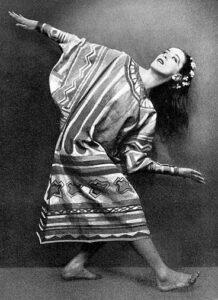
Martha Graham in The Rite of Spring (1930)
1937: An American Rite
Modern dance pioneer Lester Horton (who would later become a mentor to Alvin Ailey) created his own version of The Rite of Spring, which premiered at the Hollywood Bowl amphitheater in 1937, with Bella Lewitsky in the lead role as The Chosen One.
1940: Disney’s Fantasia
Perhaps one of the most recognizable versions of The Rite of Spring, Walt Disney adapted the score for dinosaurs in his 1940 feature film, Fantasia.
1959: Rite in Brussels
Choreographer Maurice Béjart, whose company Ballet of the 20th Century performed frequently during the Festival of Two Worlds in Spoleto, Italy, created his take on The Rite of Spring in 1959. It was performed during the Italian festival in 1961.
In 1989, Boston Ballet performed Béjart’s iteration at Spoleto Festival USA.
1962: A Royal Rite
Sir Kenneth MacMillan choreographed The Rite of Spring for the Royal Ballet in 1962, selecting a then-unknown corps de ballet dancer, Monica Mason, to perform as The Chosen One. The ballet remained in the company’s repertoire for more than 50 years. In the excerpt below, Mason coaches a new dancer in the role:
1975: Pina’s Rite
German choreographer Pina Bausch created her utterly iconic Le Sacre du printemps in 1975, covering the Opernhaus Wuppertal stage with dirt— that then ends up covering the dancers.
1980: Paul Taylor’s wild take
Described by The Washington Post as “deliciously berserk” and by The New York Times as “brilliant and infuriating,” American modern dance choreographer Paul Taylor’s cartoonish Le Sacre du printemps (The Rehearsal), involves a dance troupe, a baby heist, and a rather dark ending.
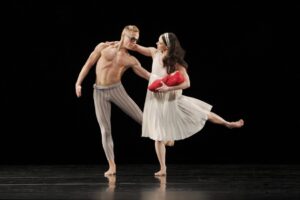
Photo by Paul B. Goode
Paul Taylor Dance Company performed the work at Spoleto Festival USA in 1984.
1984: Martha Graham, again
Decades after her performance in Massine’s The Rite of Spring, Martha Graham sets her own Rite in 1984, featuring hallmarks of her codified technique: the elements of contraction and release.
1987: A Nijinsky Revival
Following 16 years of research, Millicent Hodson, a dance historian and choreographer, and artist Kenneth Archer reconstruct Nijinsky and Roerich’s original in 1987 for the Joffrey Ballet of Chicago. Hodson painstakingly resurrects the work from notes and drawings, Stravinsky’s rehearsal score, photos, and conversations with firsthand sources, including Marie Rambert, who had served as Nijinsky’s assistant.
In 1990, the Joffrey Ballet presented Hodson’s reconstruction at Spoleto in Charleston.
2003: Shen Wei at Spoleto
Choreographer and painter Shen Wei debuts his The Rite of Spring in 2003. He presents the work in Charleston as part of Spoleto’s season the same year.
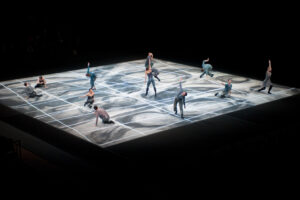
Shen Wei’s The Rite of Spring; photo by Stephanie Berger
2013: A centennial
Marking the 100th anniversary of The Rite of Spring, the Joffrey Ballet revives its 1987 reconstruction and tours the work internationally. Around the globe, plenty of choreographers get in on the celebration, including contemporary dancemaker Akram Khan, Mark Morris (see below), and Yuri Possokhov—who created this pointe-shoed adaptation for San Francisco Ballet.
2013: A Jazzy Rite
Modern dance trailblazer Mark Morris’s Spring, Spring, Spring features a take on Stravinsky’s music by jazz trio The Bad Plus.
2018: Rite at American Ballet Theatre
British choreographer Wayne McGregor makes AfteRite in 2018, his first creation for American Ballet Theatre. About the ballet, McGregor told The New York Times: “AfteRite acknowledges the ‘Rites’ I’ve seen, but also alludes to a sort of retinal burn of recurrent themes and ideas, and to a speculative future. There is something about the cyclical nature of this work that makes us look at humanity from a distance. You can’t help but question your own snapshot of existence.”
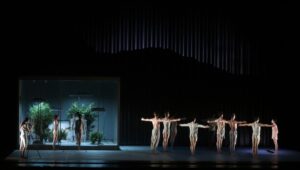
Photo by Marty Sohl
2021: Dada Masilo’s The Sacrifice
Award-winning South African choreographer Dada Masilo first learned Bausch’s The Rite of Spring while studying at the Performing Arts Research and Training Studios in Brussels. In creating her own Rite, however, Masilo uses Stravinsky’s score only as inspiration, creating a totally new composition rooted in southern African rhythms and music. The Sacrifice also incorporates Tswana dance, the traditional dance of Botswana which is often used in storytelling and in healing ceremonies. Masilo is renowned for reinventing iconic pieces from the Western canon that speak to Black identity and feminism; in The Sacrifice, Masilo herself performs as the central character led to her sacrifice.
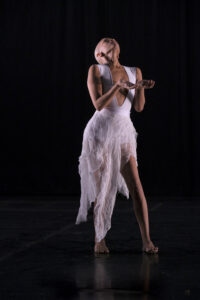
Dada Masilo in The Sacrifice; photo by John Hogg
2023: The Sacrifice in Charleston
Masilo brings her extraordinary retelling to Spoleto June 1 to 4 at the College of Charleston Sottile Theatre.

